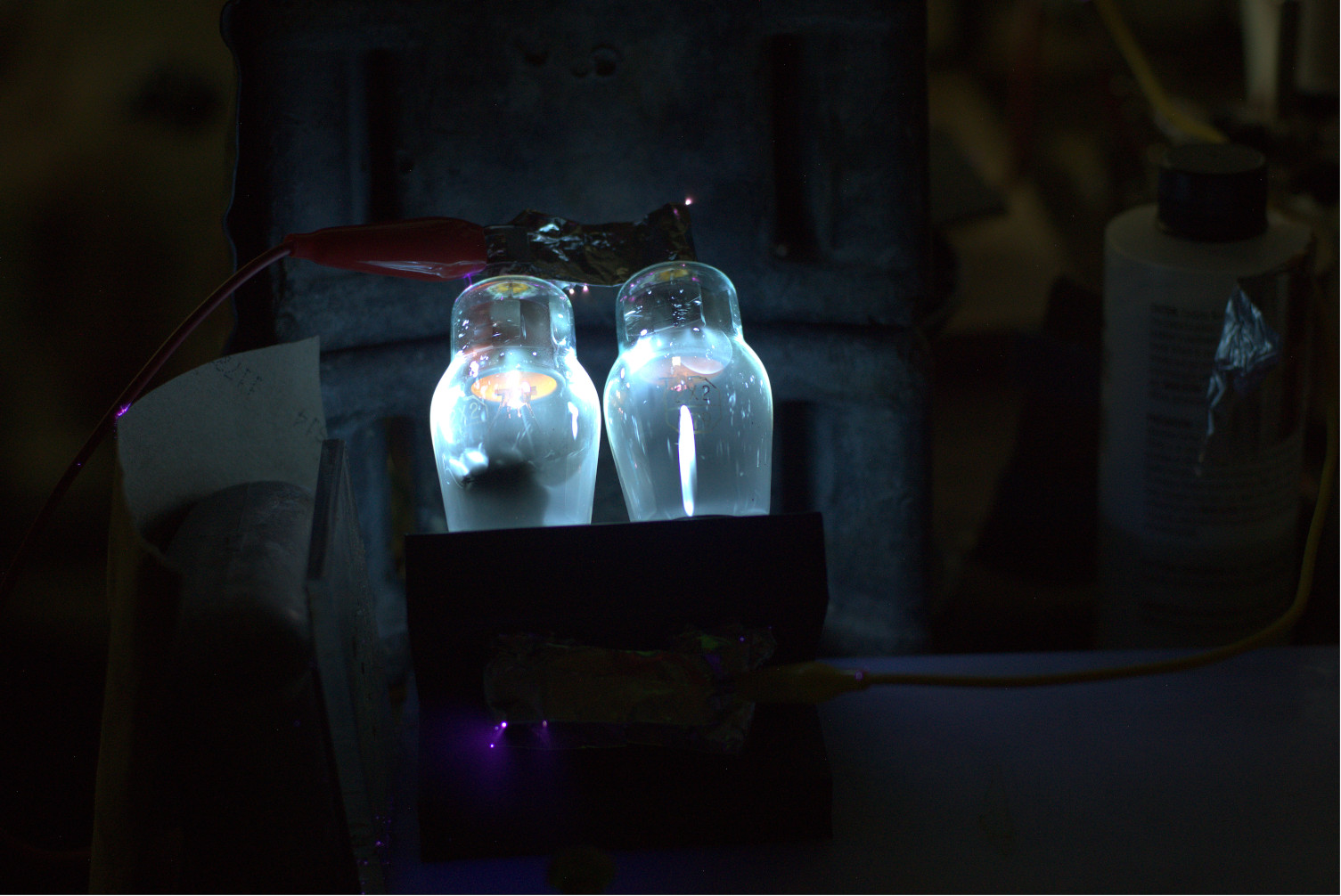


This picture of a light bulb is one of the better pictures I've taken
Description
Radiation is pretty neat to me. I've been interested in the topic for a long time and always wanted to take x-rays of objects. For years, I have tried generating them using rectifier tubes. At the time, however, I used tubes which had leaded-glass and the power supply did not output enough voltage (I'd estimate 20kV, around 40kV and up is needed to get good x-ray generation).
Recently, I modified my ZVS flyback driver and experimented with dual-staging flybacks (inspired by Uzzors2k). This generated very long sparks, indicating I am generating a much higher voltage than previous attempts. Then, I connected the new power supply to the rectifier tube I have (Sylvania 6bk4c) and checked if there was any generation of x-rays with my geiger counter. To my delight, there was! I had finally generated x-rays. However, there was not enough to make the phosphor screen fluoresce. This meant I could not take x-rays of objects.
After looking through the experiments by user radhoo on 4hv forums, I sourced two 2X2 tubes and tested them in regular and reverse polarity. Just like radhoo's results, reverse polarity produced more x-rays. This time, the x-rays produced caused the phosphor screen to fluoresce, meaning I can now take pictures!. To hold the tubes,I modeled and printed a holder which holds the tubes at a 45 degree angle. This is to follow the results from radhoo's experiments with beam spread.
When taking pictures, I only run one tube at a time. This is because the crossing beams would result in a blurry image. Running two tubes at once is to have fun generating a lot of radiation.
For radiation shielding, I used a few lead diving weights. This reduced my exposure considerably.



Description